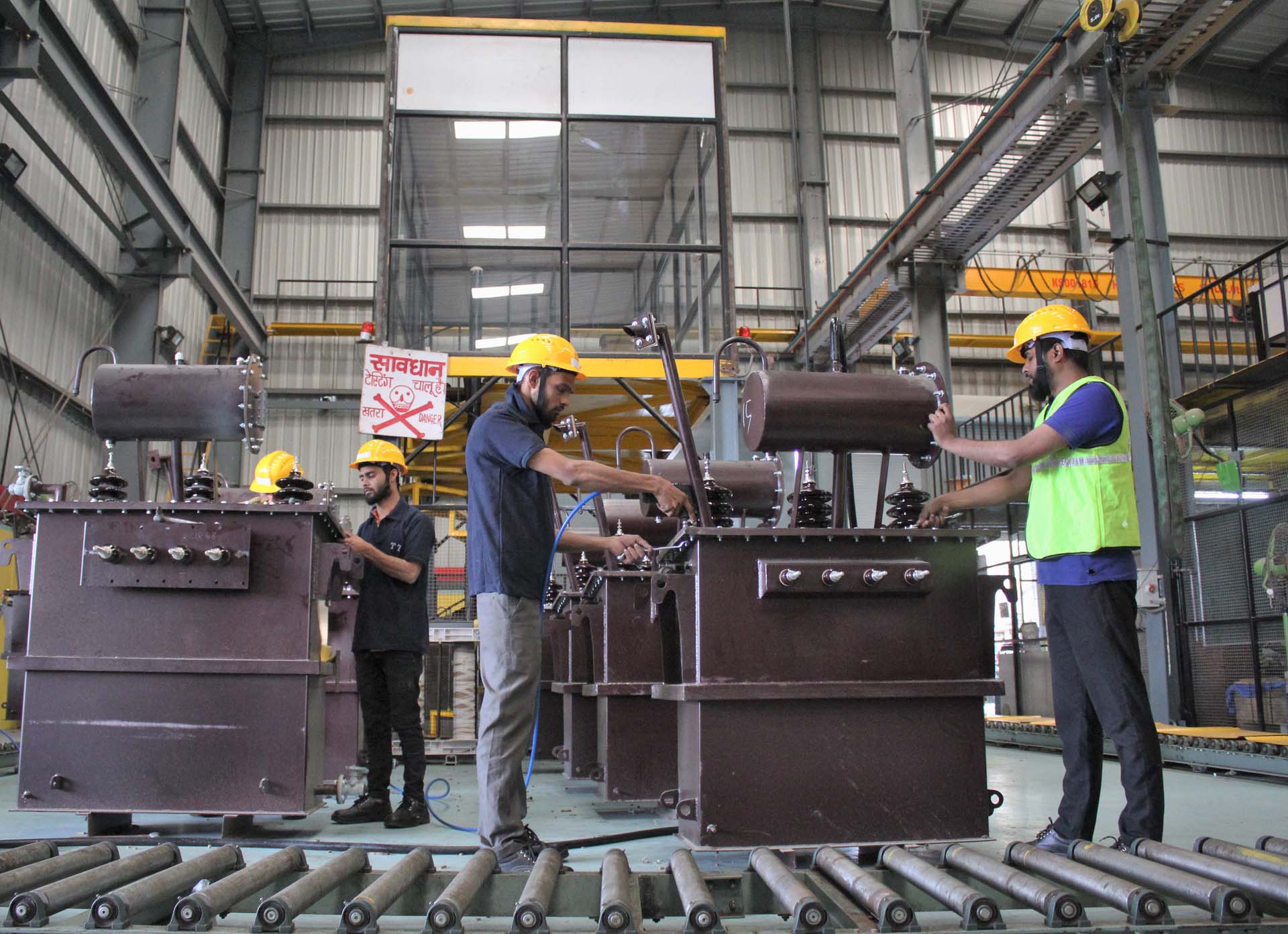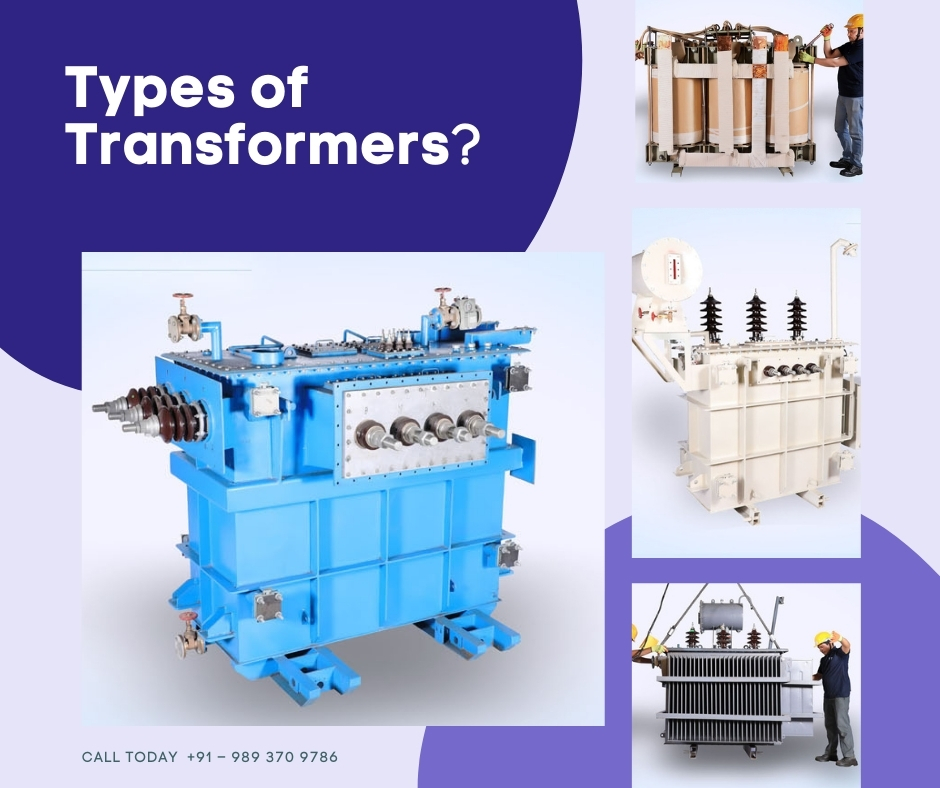A transformer is a static electrical device that transfers electrical energy between two or more circuits through electromagnetic induction.
A varying current in one coil of the transformer produces a varying magnetic field, which in turn induces a varying electromotive force or EMF in a second coil. Power can be transferred between the two coils, without a metallic connection between the two circuits.
There are several types of Transformer used in the electrical power system for different purposes, like in power generation, distribution, transmission and utilization of electrical power.
There are seven categories of the transformer that are made for different purposes.
- Construction.
- Core Medium.
- Voltage Level.
- Type of supply.
- Their use.
- Instrument Transformer.
- Place of Use.
1.According to Construction.

The construction of a transformer is dependent upon how the primary and secondary windings are wound around the central laminated steel core. The two most common and basic designs of transformer construction are the core type Transformer and the Shell type Transformer.
Core Type of Transformer.
In core-type transformer, windings are cylindrical former wound mounted on the core limbs as shown. The cylindrical coils have different layers and each layer is insulated from the other. Low voltage windings are placed nearer to the core, as they are easier to insulate. Sell type Transformer. The coils are former wound and mounted in layers stacked with insulation between them.
A shell-type transformer may have a simple rectangular form or it may have a distributed form.
2. According to Core Medium.
Based on the medium placed between the primary and secondary winding the transformers are classified as, Air core transformer and Iron core transformer.
Air-Core Transformer.
The primary and secondary windings wound on the non-magnetic strip where the flux linkage between primary and secondary is through the air. The mutual inductance effect is less in the air-core compared to the iron core i.e. the reluctance offered to the generated flux is high in the air medium whereas in the iron core it is less. But the hysteresis and eddy current losses which are dominant in iron core type are less or completely eliminated in air-core type transformer.
Iron Core Transformer.
The primary and secondary windings are wound on multiple iron plate bunch which provide a perfect linkage path to the generated flux. It offers less reluctance to the linkage flux due to the conductive and magnetic property of the iron. These are widely used transformers in which efficiency is high compared to the air core type transformer.
3.According to Voltage Level.
These are the most commonly used transformer types for all the applications. Depends upon the voltage ratios from primary to secondary windings, the transformers are classified as, step-up and step-down transformers.
Step Up Transformer.
On a step-up transformer, there are more turns on the secondary coil than the primary coil. The induced voltage across the secondary coil is greater than the applied voltage across the primary coil or in other words the voltage has been stepped up.
Step Down Transformer.
A step-down transformer has fewer turns on the secondary coil than the primary coils. The induced voltage across the secondary coil is less the applied voltage across the primary coil or in other words the voltage is stepped-down.
4.According to the type of supply.
These are the most commonly used transformer types for Depends on the supply line. There are classified as, Single Phase Transformer and Three Phase Transformer. Single Phase Transformer.
Single-phase transformers accept single-phase AC power and output single-phase AC power, typically at a higher or lower voltage level. Energy is transferred from one circuit to
one or more circuits via electromagnetic induction.
Three Phase Transformer.
Three-phase electric power is a common method of alternating-current electric power generation, transmission, and distribution. It is a type of polyphase system and is the most common method used by electrical grids worldwide to transfer power.
5.According to Their Use.
According to the necessity, these are classified as the power transformer, distribution transformer measuring transformer, and instrument transformer. Power Transformer. A transformer located directly next to a power plant is called GSU Generator Step-up Unit. A GSU transforms the electric power from the medium voltage of the generators to the high voltage transmission level.
To balance power flow between parallel power lines, phase shifters can be used.
Distribution Transformer.
A distribution transformer or service transformer is a transformer that provides the final voltage transformation in the electric power distribution system, stepping down the voltage used in the distribution lines to the level used by the customer.
6. Instrument Transformer.
Instrument transformers are high accuracy class electrical devices used to isolate or transform voltage or current levels. Instrument transformer is classified as, Current transformer and Potential transformer.
Current Transformer CT.
A current transformer is an electric device that produces an alternating current in its secondary which is proportional to the AC current in its primary.
Potential Transformer PT.
Voltage transformers also called potential transformers PT, are a parallel-connected type of instrument transformer. They are designed to present negligible load to the supply being measured and have an accurate voltage ratio and phase relationship to enable accurate secondary connected metering.
7.According to the Place of Use.
These are classified as indoor and outdoor transformers. Indoor transformers are covered with a proper roof like in the process industry. The outdoor transformers are nothing but distribution type transformers.



